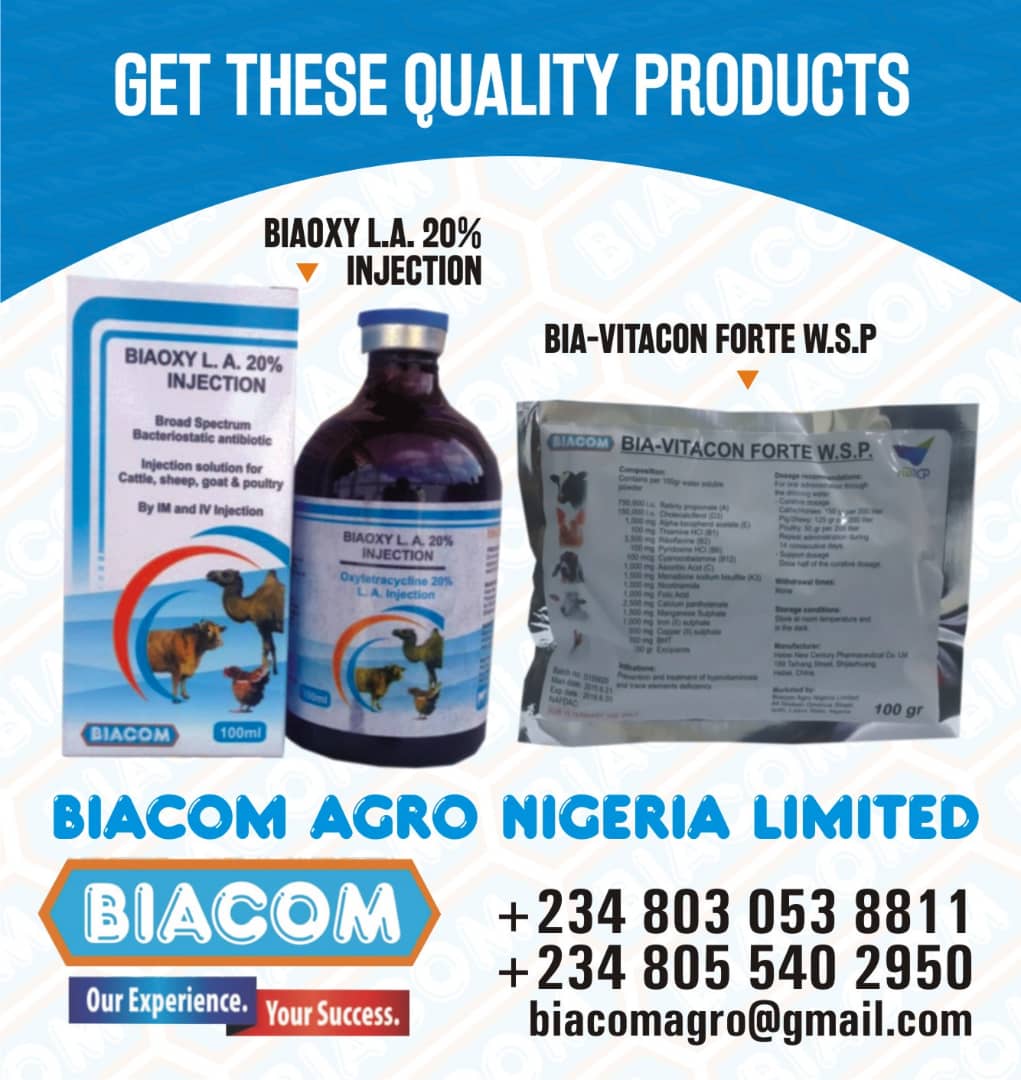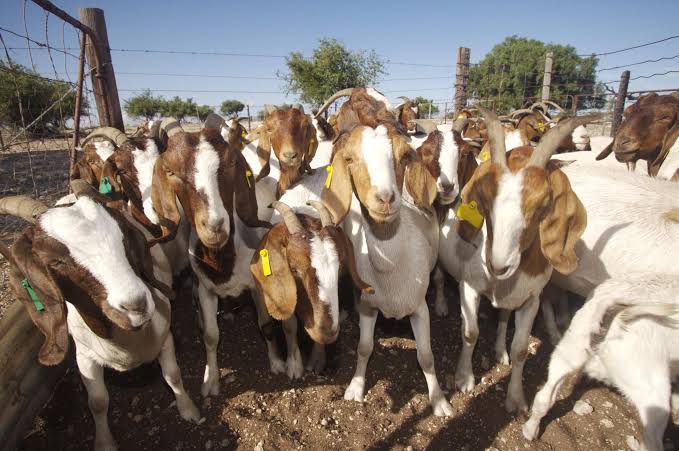Goat Health Basics To Keep Your Herd in Good Performance
Goats need their keeper’s care in order to live long and be healthy. Here’s are a few thing you can do to ensure your goat herd’s best health.
Read on for six important ways you can help your goats thrive, too.
 Learn More
Learn More
1. Monitor for parasites, then control when necessary.
Parasites are greedy organisms that live on or inside another host organism, stealing nourishment while providing no benefit in return. In fact, they can be quite harmful to your goats.

“Parasite problems are far and away the biggest goat health problem we encounter in our practice,” says Chris Duemler, D.V.M., who has treated small ruminants for 44 years and owns Brodhead Veterinary Medical Center in Brodhead, Wisconsin.
External
Goats can suffer from a number of external parasites, such as biting and sucking lice, keds, ticks and several mite species. Depending on the pest, infestations can irritate and infect the skin, transmit disease and lead to anemia and hair loss. In short, you could end up with some unthrifty and possibly very itchy goats.
A veterinarian can help you identify the culprit and advise on an appropriate treatment, often a topical insecticide.
Internal
Internal parasites affecting goats include tapeworms, liver flukes, coccidia and roundworms such as Haemonchus contortus, the notoriously drug-resistant barber pole worm. Meningeal worm, transmitted in the droppings of white-tailed deer, is also a concern.
While all goats carry some internal parasites, high levels can lead to illness and even death. Signs to watch for are diarrhea, weight loss, anemia, poor coat and/or swelling of the lower jaw. Animals with meningeal worm may stumble or show weakness or paralysis of the hind legs.
Additionally, control has become more complicated due to the serious issue of parasite resistance to dewormers. Goat raisers should work with a local veterinarian to implement a prevention, monitoring and treatment program tailored to their herd. We’ll talk a little more about preventing diseases—including some caused by parasites—next.
READ ALSO: 4 THINGS FARMERS GET WRONG IN GOAT FARMING
2. Shield your herd from diseases with biosecurity tactics.
Chronic, contagious diseases such as Caprine Arthritis Encephalitis (CAE), Caseous Lymphadenitis (CL) and Johne’s disease rank as the next most common goat health issues encountered by Duemler in his Wisconsin practice. Respiratory infections like pneumonia are routine, too, frequently caused by inadequate ventilation in barns over the winter.
Like parasites, prevalent goat diseases can vary from location to location and herd to herd, he says. That said, the list of viral and bacterial diseases capable of sickening our caprine friends is a lengthy one guaranteed to keep a fond goat-keeper awake at night.
For example, CL produces abscesses in the lymph nodes and internal organs. The five main forms of CAE lead to either arthritis, encephalitis, mastitis, pneumonia or chronic wasting. Goats that contract Johne’s disease experience rapid weight loss. Animals with tetanus—caused by a clostridium bacteria entering a wound—suffer muscle spasms and rigidity before dying.
Sore mouth, or contagious ecthyma, produces blistering/scabbing of the lips and other areas. Several diseases can induce does to abort, including toxoplasmosis and chlamydial infections. Young goats are especially susceptible to enterotoxemia Type D (overeating disease), which causes diarrhea, abdominal pain and convulsions.
Keep in mind that a goat herd and flock of sheep will share many of the same health maladies, often transmittable between the two species. Even scarier, some livestock diseases have zoonotic potential. That is, they can be transmitted to humans. Sore mouth and leptospirosis are just two examples.
Take Care
How to ward off these dangerous organisms for optimal goat health?
“The No. 1 way to protect your goats from disease is to keep a closed herd,” Duemler says. In other words, no other livestock come to your farm and your own animals don’t go where they’ll be exposed to other livestock.
“Getting back to parasites as an example—if you bring in an animal from another part of the country that has resistant barber pole worm, you can never get rid of it,” he says. “I see this happen all of the time.”
But what if you need to replace a deceased doe, bring in a new buck, or have your heart set on showing?
Biosecurity Basics
Other biosecurity basics include keeping your goat’s quarters clean and well-ventilated, sanitizing shared equipment, restricting other livestock-keepers’ access to your herd (their vehicles, too), promptly treating and isolating sick animals, and controlling rodents.
You can also protect your goat herd’s health by vaccinating them yearly for tetanus and clostridium perfringens Types C and D. With few other vaccines approved for goats, though, Duemler recommends talking to your vet about which diseases threaten herds in your area and how to test for and protect against them. Acquaint yourself with the warning signs of illness and get prompt veterinary help when warranted.
If the worst happens and one of your charges dies from a mystery illness, follow up with diagnostic testing and/or a necropsy to determine cause of death. This can help you and your vet formulate a plan to prevent more casualties and heartbreak.
3. Feed your goats the right diet (easier said than done).
Like their fellow ruminants cattle, sheep and deer, goats get their nutrients from plants by digesting them in a specialized four-chambered stomach. Much pickier than their tin-can eating reputation implies, they adore browsing on certain shrubs, trees and weeds, and to a lesser degree on grasses.
Forage and clean, quality hay should form the foundation of your herd’s diet, along with goat-appropriate minerals and an ample supply of clean water. Beyond these essentials, however, deciding on a balanced ration for your animals can be tricky.
Goats are vulnerable to a number of nutritional diseases caused by improper feeding and/or supplementation. What’s more, pregnant or lactating does, kids, bucks and wethers all have different nutrient requirements, as do animals used for different purposes, such as dairy, meat, fiber or pet.
READ ALSO: FIVE MAJOR WAYS TO MAINTAIN HEALTHY GOATS
A milking doe, for instance, will probably require calcium-rich alfalfa and supplemental grain to remain healthy and productive. By contrast, a pet wether prone to plumpness will do fine on grass hay.
Location
Furthermore, nutrition is hugely local. “Forage in different parts of the country contains different levels of nutrients,” he says. “For example, in our area of Wisconsin, we don’t have to supplement copper, but we do have to provide selenium and zinc.”
Rutting bucks, for example, can rapidly lose weight.
“I do a lot of necropsies on bucks that don’t have any meat on them,” he says. “If they’re getting way too thin, you need to pull them away from the does and feed them separately.”
Whatever ration you ultimately decide to serve your herd, be sure to avoid any sudden dietary changes.
4. Give your goats regular hoof trims.
Goats’ hooves grow constantly, just as our nails do. So unless they live 24/7 on rocky terrain like their wild relatives, you’ll need to give your herd regular trims to prevent overgrowth that can cause lameness and predispose them to foot rot.
5. Prevent accidents & injuries with goat-/predator-proofing.
While I hesitate to describe goats as accident-prone, they are extremely curious, mischievous and agile. This means that accidents and injuries sometimes happen. Still, you can keep mishaps to a minimum by taking some sensible precautions.
Help keep your capricious friends out of the road or a predator’s jaws with sturdy, well-maintained fencing that is as escape- and predator-proof as possible. We prefer a mix of nonclimb horse mesh and heavy-duty stock panels at least 4 to 5 feet in height on our farm.
We’ve learned that keeping our livestock in secure night housing also stymies predators.
Check fences, structures and enclosures regularly for hazards such as exposed nails, loose twine, wire, ingestible items, and holes or gaps that might capture a head, leg or horns. Keep in mind that goats love to “assist” when you’re working. After cleaning up a few too many spilled nails, we’ve learned to banish ours to another enclosure until our job is finished.
Never tether a goat unless you’re right there to watch. This dangerous practice can result in strangulation or limb entanglement, plus make your goat extremely vulnerable to attack.
Familiarize yourself with plants poisonous to livestock and eradicate them from your farm. Check out this partial list at “Poisonous Plants to Livestock” by North Carolina State University Extension.
To be on the safe side, politely ask neighbors to refrain from feeding yard trimmings to your herd as well.
“A common thing that happens here is people will trim a Japanese yew and toss the branches to their neighbor’s goats,” Duemler says, noting that this tree contains a potent cardiac glycoside. “[In fact,] if a client has one of these trees planted in their yard, I tell them to remove it, because it will eventually kill their goats when they get out.”
6. Boost your herd’s mental well-being.
Goats are social, playful and intelligent. Like us, they need companionship, room to exercise and a stimulating environment. (Think climbing toys.) Provide for these mental health essentials, and I promise you won’t be sorry.















